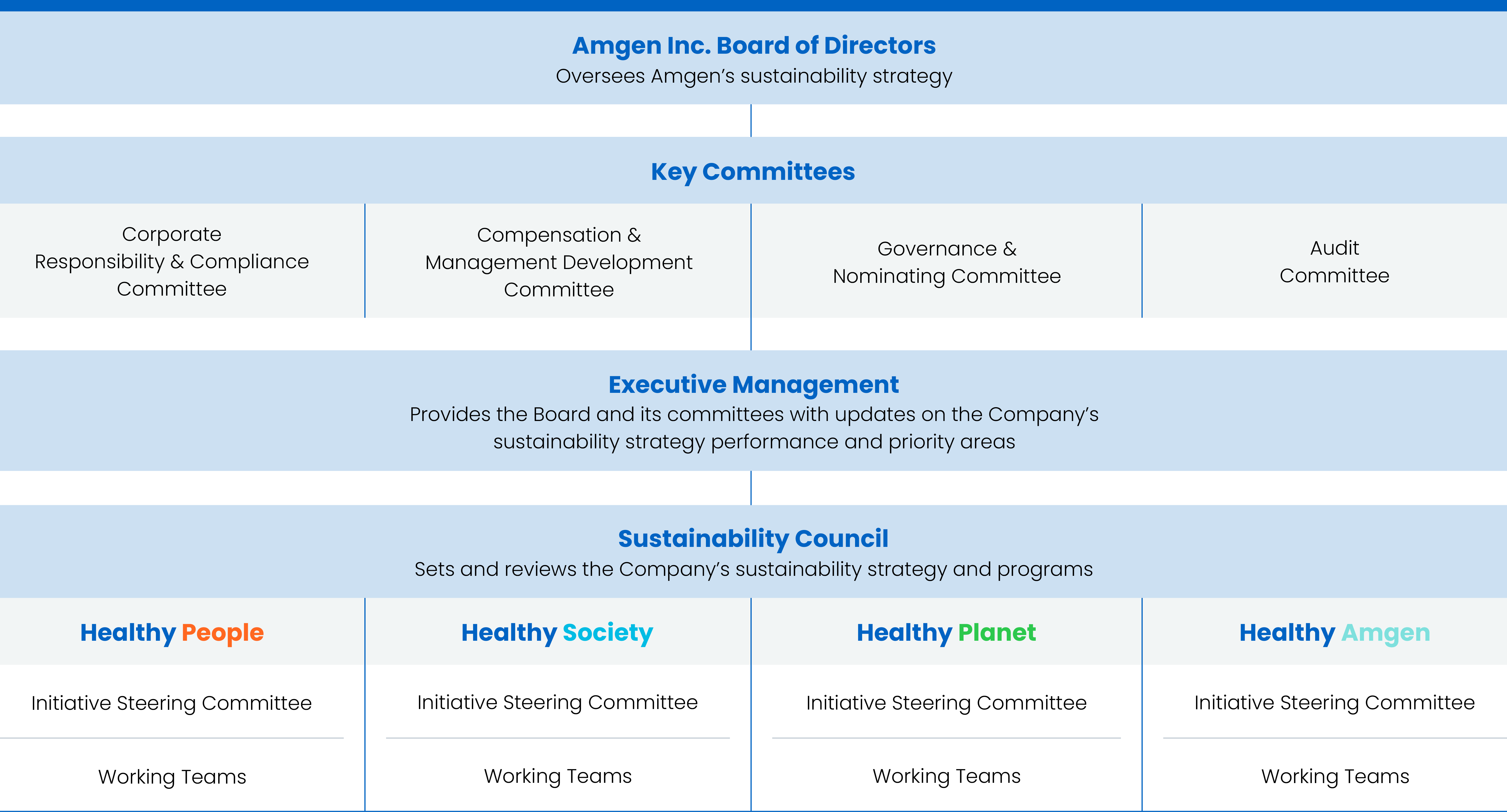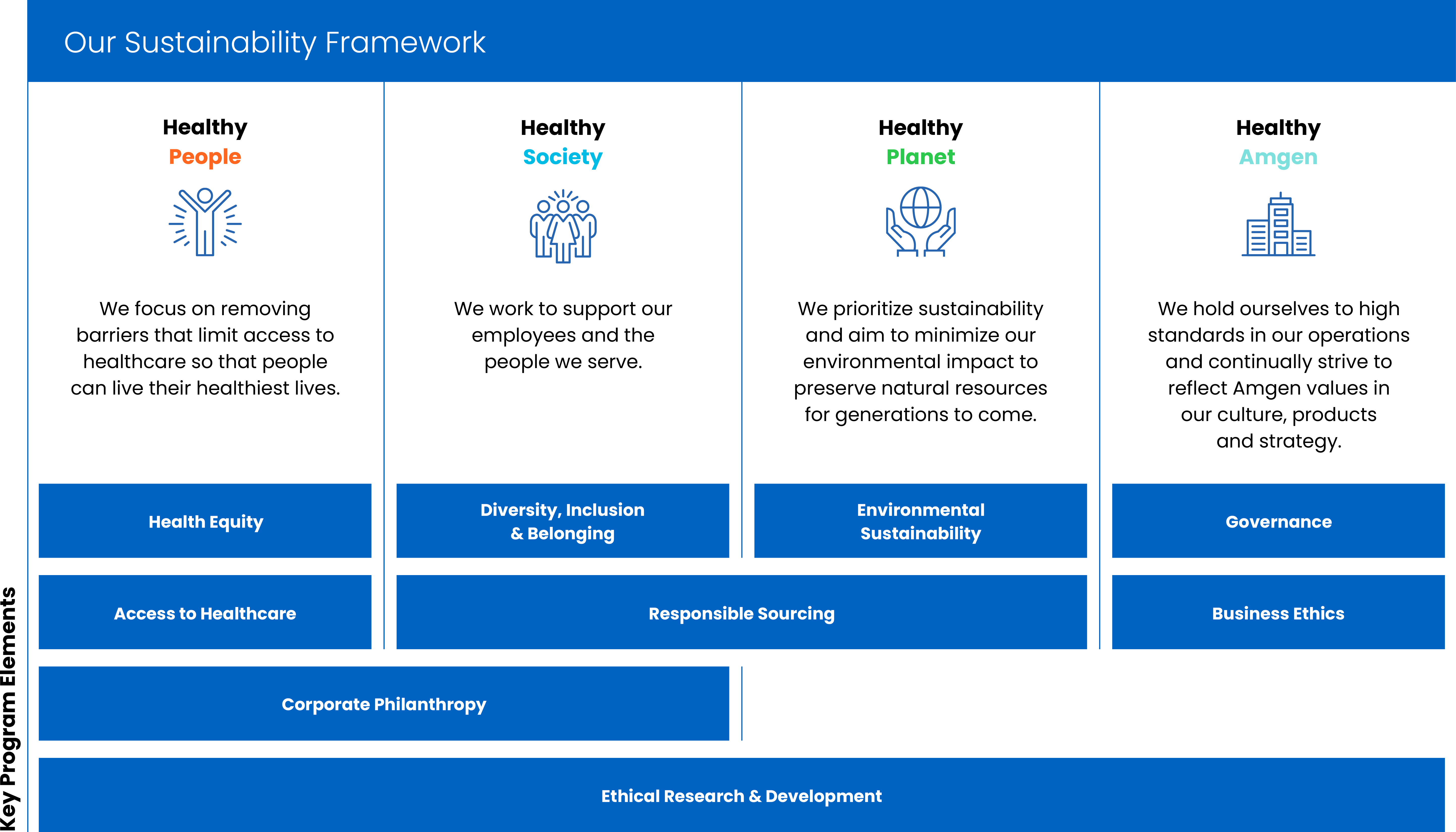Amgen's approach to corporate sustainability starts with our mission to serve patients and is executed through our Sustainability Framework. From our endeavors to strengthen science education and inspire the next generation of scientists, to expanding access to healthcare worldwide and pursuing a more environmentally sustainable business model, our mission guides how we do what we do.
Amgen's Sustainability Framework is built on four pillars: Healthy People, Healthy Society, Healthy Planet, and a Healthy Amgen. This framework facilitates our ability to address the interconnectivity of issues across our business and helps us integrate these activities more closely with our long-term strategy.
Sustainability Governance
The Amgen Board of Directors and its committees provide oversight of Amgen's corporate sustainability strategy. Amgen's executive management provides regular updates to the Board and its committees regarding the status and progress of the Company's corporate sustainability activities.
Our cross-functional executive-level Sustainability Council sets and reviews the Company's corporate sustainability strategy and programs. The Council is chaired by our Chief Compliance Officer and includes other executive-level representatives from across the organization.
Supporting the Council are four Initiative Steering Committees (ISCs), each aligned with one of our four pillars. Each ISC is responsible for coordinating the implementation of the strategy for their respective pillar and leading the integration of our corporate sustainability strategy into the Company with the support of subject-matter expert working teams. ISC members are also responsible for identifying emerging corporate sustainability issues that could impact Amgen's business, employees, communities or stakeholders and, when appropriate, raise them with the Sustainability Council for discussion and analysis.

More information about Corporate Governance.
Our Stakeholders Inform our Corporate Sustainability Priorities
Amgen uses a variety of analytical tools to help us identify and evolve the corporate sustainability topics that are the subject of our focus:
- Periodic Stakeholder Perspective Assessments, which analyze the perspectives of both internal and external stakeholders.
- Direct and indirect interactions with stakeholders, including investors, patients, healthcare professionals and patient advocacy organizations.
- Monitoring the alignment and integration of corporate sustainability with Amgen's strategy, mission and values. We also review and are working to report in alignment with relevant reporting standards and frameworks, such as CDP, Sustainability Standards Accounting Board (SASB) and Task Force on Carbon-Related Financial Disclosures (TCFD).
In the chart below, our key corporate sustainability priorities are shown in relationship to the four strategic pillars of our Sustainability Framework.

United Nations (U.N.) Global Compact, U.N. Sustainable Development Goals, and SASB
Amgen is a signatory to the U.N. Global Compact. We publish a table showing Amgen's approach to supporting several U.N. Sustainable Development Goals (SDGs) and a table showing alignment between our reporting and the SASB standards for our industry in our latest Sustainability Report.
